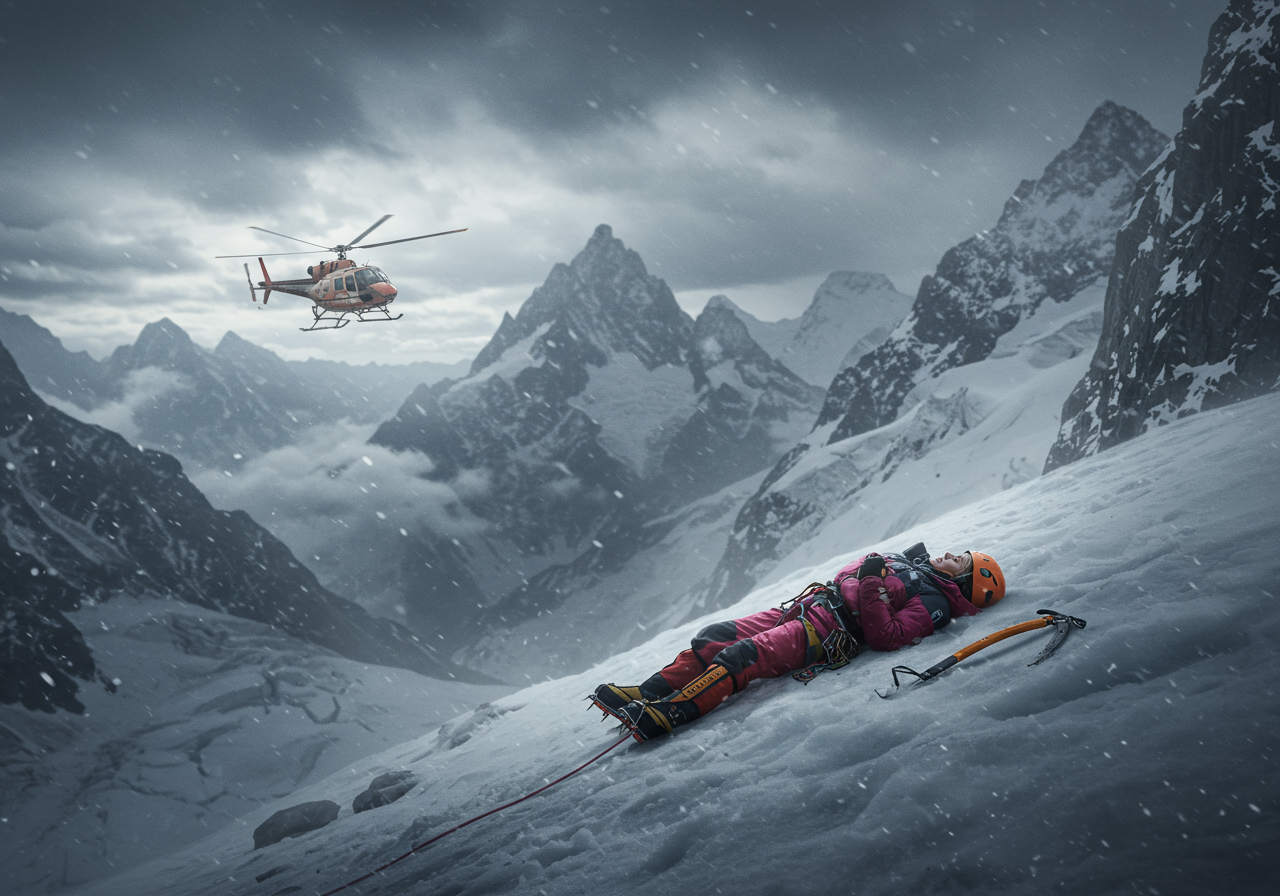By Kristina Vankova
In a tragic event that has shaken the climbing community, Czech climber Klára Kolouchová tragically lost her life while attempting to summit the notoriously dangerous mountain, known to many as the “Killer Mountain.” This formidable peak has earned its sinister nickname due to the high fatality rate among those who attempt to conquer its heights.
Klára Kolouchová was no stranger to challenging climbs. With an impressive record that includes summiting Mount Everest, she was one of the most accomplished Czech climbers of her generation. Her passion for climbing was matched only by her respect for the mountains, understanding the perils that each expedition can present. Her untimely death has brought attention not just to the risks of the sport, but to the particular challenges posed by this notorious mountain.
Mountaineering experts have long cautioned about the hazards associated with this peak. Its reputation as a “Killer Mountain” is not unfounded. With extreme weather conditions, treacherous terrains, and unpredictable avalanches, it presents obstacles that are formidable even for the most seasoned climbers. The mountain’s daunting terrain and geographical challenges create an environment where, as mountaineer John Porter puts it, “even the most careful can find themselves in peril.”
The allure of challenging peaks is undeniable for climbers, driven by both the thrill and the test of human endurance. However, this enthusiasm can sometimes overshadow the dangers that these natural giants pose. The tragic death of Klára Kolouchová has led to an outpouring of grief and reflection within the climbing community, prompting a re-evaluation of safety measures and preparedness for such expeditions.
Veteran climbers and experts are sharing their insights into what makes this climb so perilous. The mountain’s altitude creates an oxygen-deficient environment, making every step a taxing endeavor. “Climbing this mountain is not just physically exhausting but mentally straining as well,” says Daniela Rakusanova, a fellow climber who had once trained with Kolouchová. “The thin air can play tricks on the mind, and any miscalculation can be fatal.”
In addition to the severe impact of altitude, the weather conditions on the mountain are notoriously unpredictable. Sudden snowstorms can reduce visibility to virtually zero, and a shift in weather can quickly turn a hopeful ascent into a battle for survival. The chilling temperatures and powerful winds compound the challenges, testing the resolve and resilience of climbers.
The technical climbing skills required to navigate this mountain further emphasize its treacherous nature. Climbers must tackle steep faces, ice walls, and crevasses, each presenting unique challenges. The sheer drop-offs and narrow ridges require precision and skill, leaving no room for error. As experienced mountaineer Tomas Slovak notes, “It’s a place where nature shows no mercy, and every climber must earn their way with diligence and respect.”
Even before Kolouchová’s tragic demise, the mountain had claimed other lives, serving as a sobering reminder of the inherent risks associated with such endeavors. This has sparked discussions among climbing federations on improving training, risk assessment, and emergency response plans to prevent future tragedies. The need for advanced equipment and survival gear is emphasized, along with the importance of having a knowledgeable guide well-acquainted with the terrain.
Moreover, the psychological toll of high-altitude climbing is a critical factor often overshadowed by the physical demands. The isolation and intensity of the environment can cause climbers to experience a profound sense of vulnerability. “You are stripped to your very essence, facing both the mountain and your own limits,” shares Helena Novakova, another Czech mountaineer who had previously attempted the same climb.
For those who knew Klára Kolouchová, she was more than just a climber. Her relentless spirit and dedication were an inspiration to many. Her loss has ignited conversations around the world about the fine line between passion and peril in extreme sports. Advocates believe that expanding climber education and safety protocols can help honor Kolouchová’s legacy by fostering a more informed and cautious climbing community.
The unpredictable nature of mountain environments means no amount of preparation can entirely eliminate risk. However, it is crucial that awareness is raised about potential dangers and that climbers are better equipped to handle unforeseen situations. This includes continuous advancements in climbing technology, improved weather forecasting, and enhanced rescue operations tailored to the unique challenges of high-altitude environments.
Despite the looming dangers, many climbers remain undeterred in their quest to conquer such revered summits. The love for the mountains and the desire to push human limits fuels their ambitions. It’s a pursuit that embodies both the spirit of adventure and an acceptance of the risks involved. This balance of respect and awe for nature, intertwined with human curiosity and tenacity, continues to define the culture of mountaineering.
As the climbing community mourns Klára Kolouchová, her story serves as a poignant reminder of the broader challenges faced by those who dare to venture into the world’s harshest terrains. Her memory will endure, encouraging future generations of climbers to approach their ambitions with humility, respect, and an unwavering commitment to safety. Through continuous learning and sharing of experiences, climbers can honor Kolouchová’s passion by fostering a supportive culture that prioritizes both the spirit of adventure and the sanctity of life.
